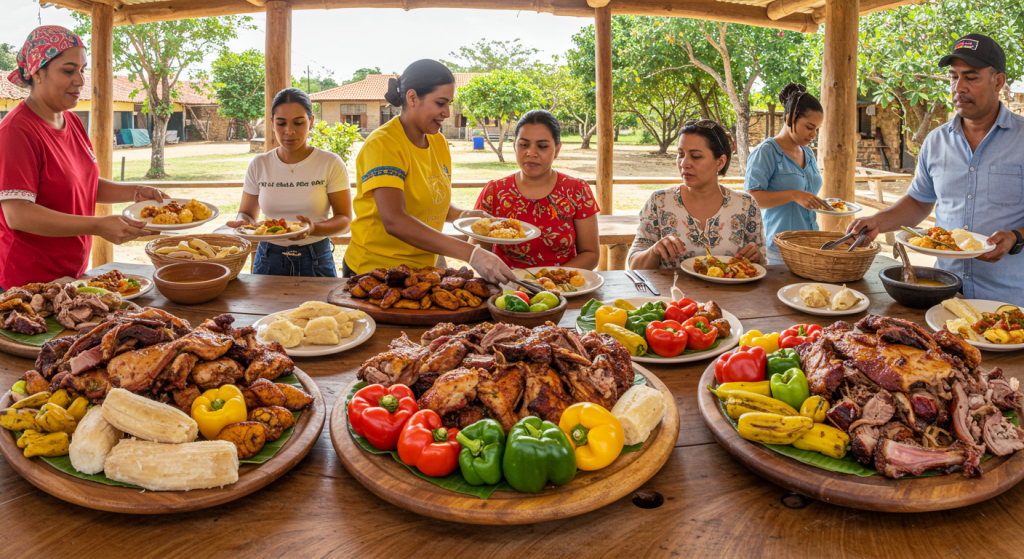
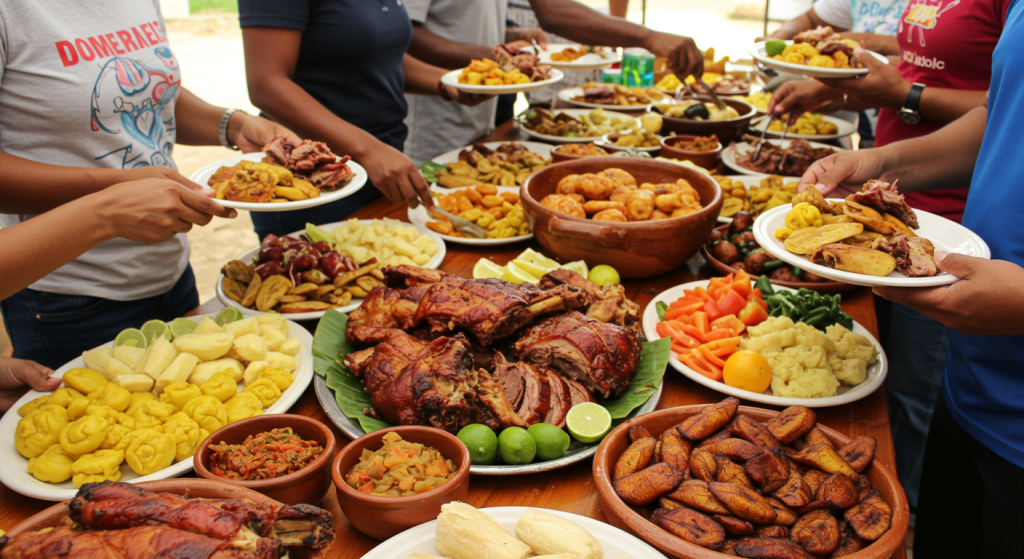
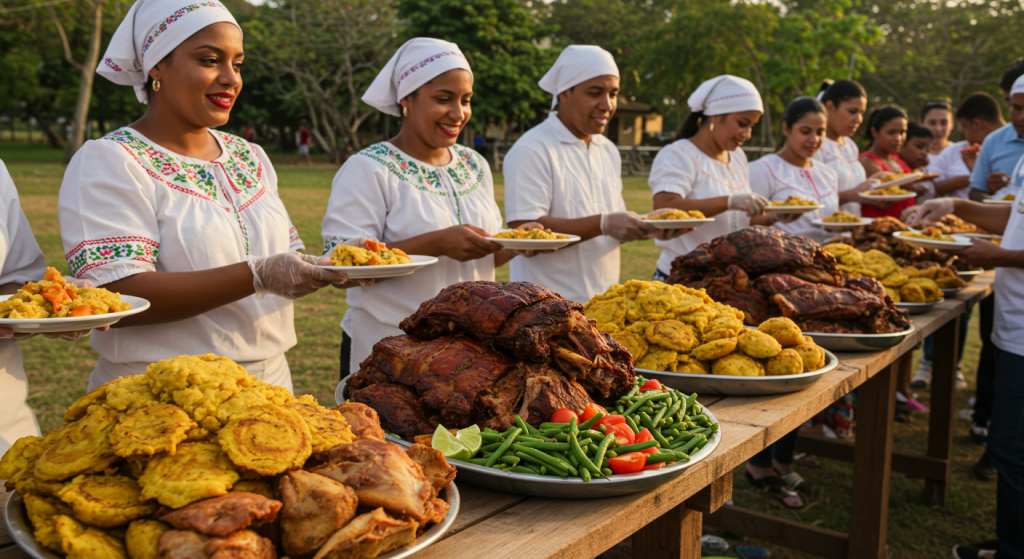
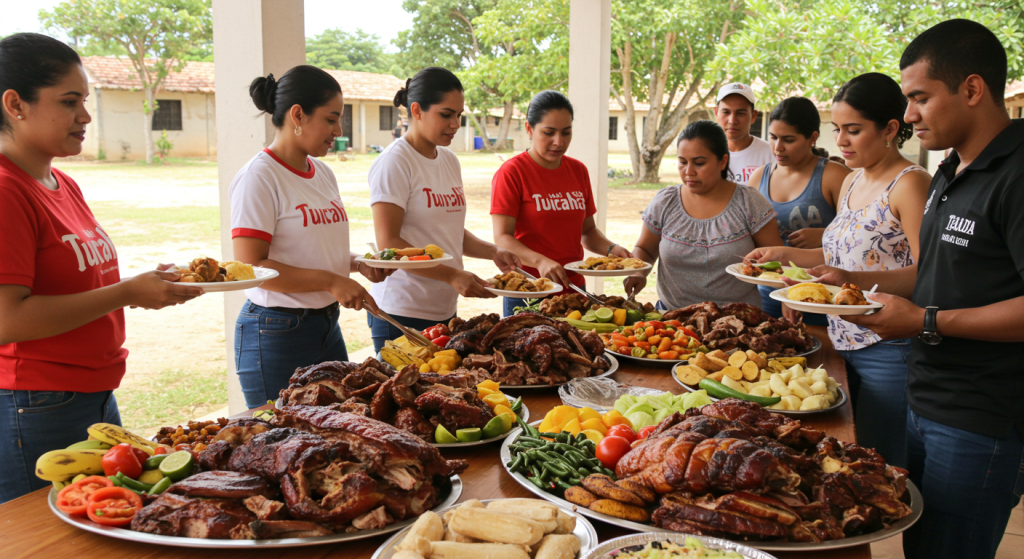
The Dominican Republic, a vibrant nation nestled in the Caribbean, is known not only for its stunning beaches and lush landscapes but also for its rich culinary traditions that reflect the diverse cultural influences shaping the island. A quintessential part of this culinary heritage lies in the hearty and flavorful meals that feature large chunks of meat, fresh vegetables, and an array of local flavors.
Food in the Dominican Republic is often communal, with many families gathering around a large table to enjoy traditional dishes that are both satisfying and bursting with flavor. The Dominican diet is a wonderful blend of influences from Indigenous Taíno, African, and Spanish cuisine, resulting in meals that are both unique and culturally significant.
One of the most iconic dishes found in the Dominican Republic is “La Bandera,” a classic meal typically served for lunch. It consists of large portions of rice, beans, and meat—often beef, chicken, or pork—alongside a side of fried plantains. The presentation is not just about taste; it’s a feast for the eyes as well, with each component thoughtfully arranged on the plate. The meat, usually marinated in a rich blend of spices, is cooked to perfection, offering a tender texture that makes each bite a delight.
Another beloved dish is “Sancocho,” a hearty stew that serves as a perfect representation of Dominican comfort food. This dish combines various types of meat—often chicken, beef, and pork—with a medley of vegetables such as yuca, corn, and plantains. The ingredients are simmered together in a savory broth, creating a flavorful and aromatic meal that warms the soul. It’s not unusual for families to prepare Sancocho during special occasions or gatherings, as it symbolizes togetherness and celebration.
The use of fresh vegetables in Dominican cooking cannot be overlooked. Markets brim with vibrant produce, from ripe avocados to sweet bell peppers, ensuring that every meal is not only filling but also nutritious. Vegetables often accompany the main dishes, adding a burst of color and freshness. Salads made from local ingredients enhance the meal, showcasing the island’s agricultural abundance.
In addition to these hearty staples, the Dominican Republic has diverse street foods that are deeply woven into the fabric of everyday life. “Chimichurri,” a Dominican-style hamburger, is a must-try for anyone seeking to taste local flavors. It features a juicy patty, crispy cabbage, and a drizzle of special sauce, all tucked into a warm bun. Similarly, “empanadas” filled with meat or cheese make for popular snacks or appetizers, enjoyed by both locals and visitors alike.
To round off a meal, desserts like the beloved “flan” or “dulce de leche” provide a sweet conclusion to a flavorful experience. Local fruits, such as guava, mango, and coconut, are often transformed into delectable treats that showcase the natural sweetness of the island.
The Dominican culinary landscape offers an array of flavors and textures that ensure every meal is an adventure. Whether it’s a family gathering around a plate of La Bandera or enjoying a quick bite of street food, every dish tells a story of the island’s rich culture and traditions, making the Dominican Republic a true paradise for food lovers.
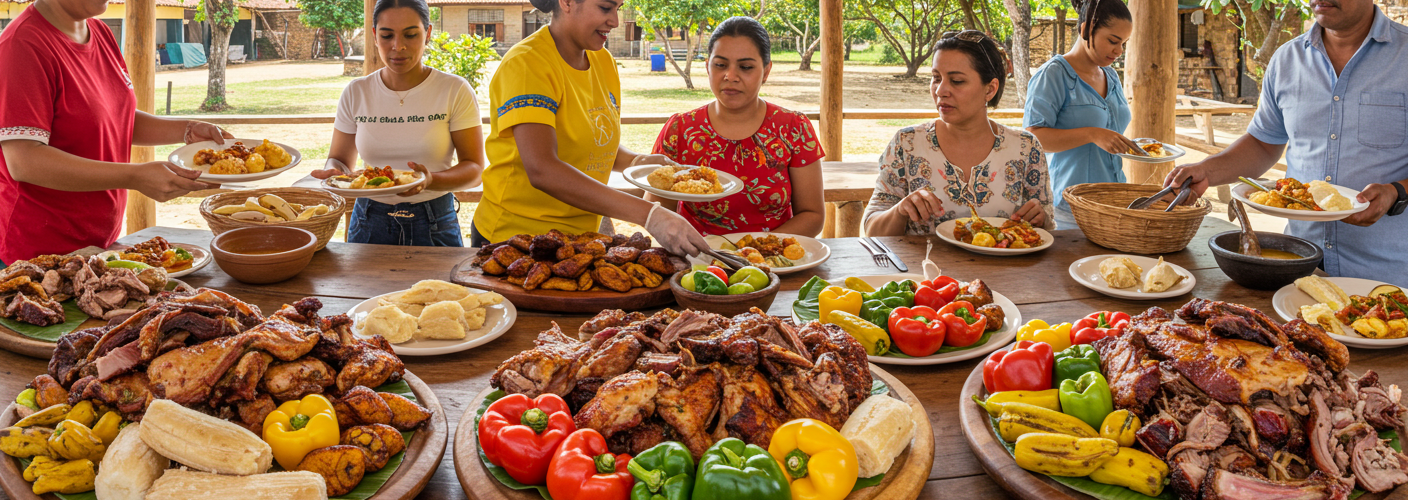



Add comment